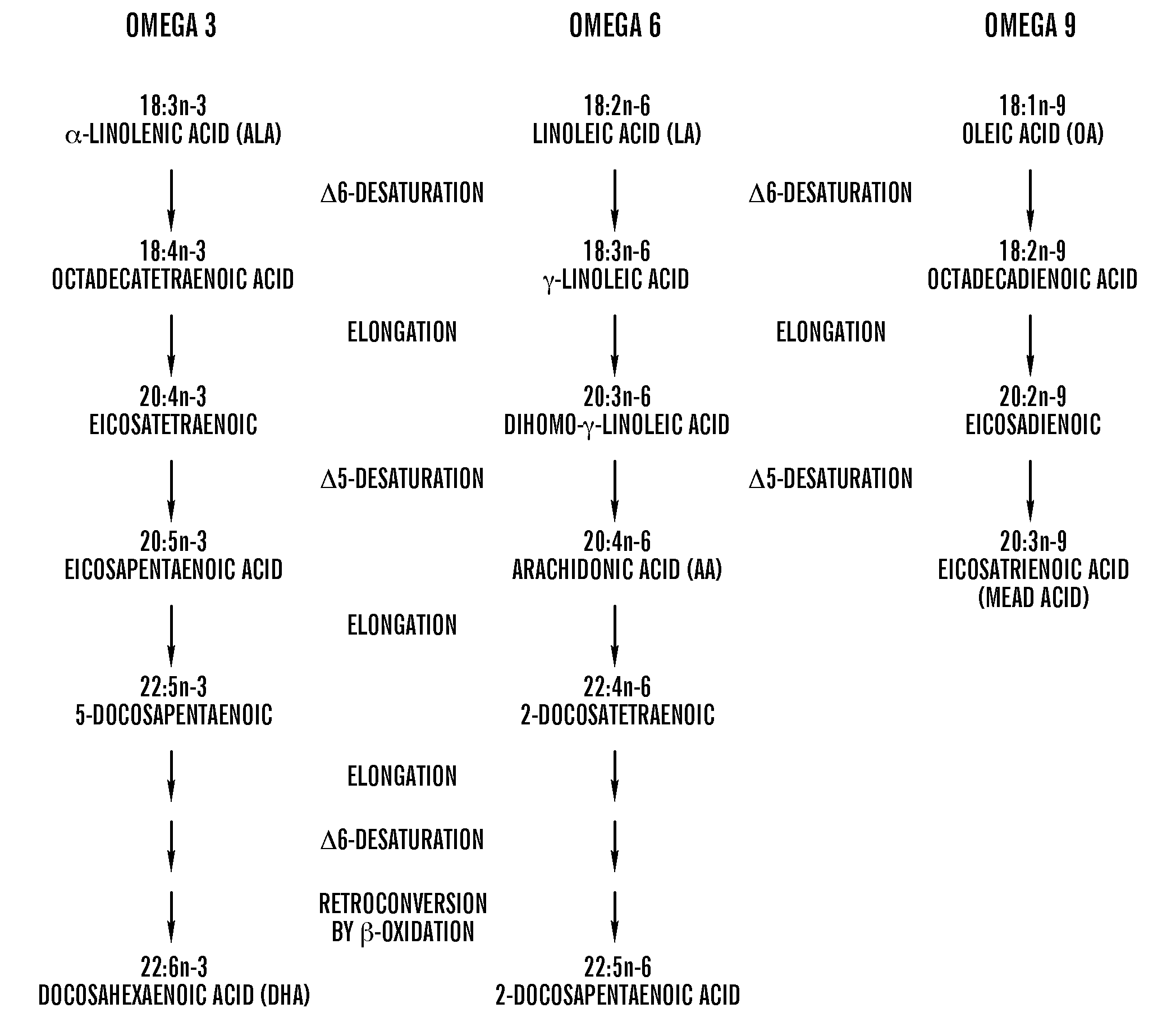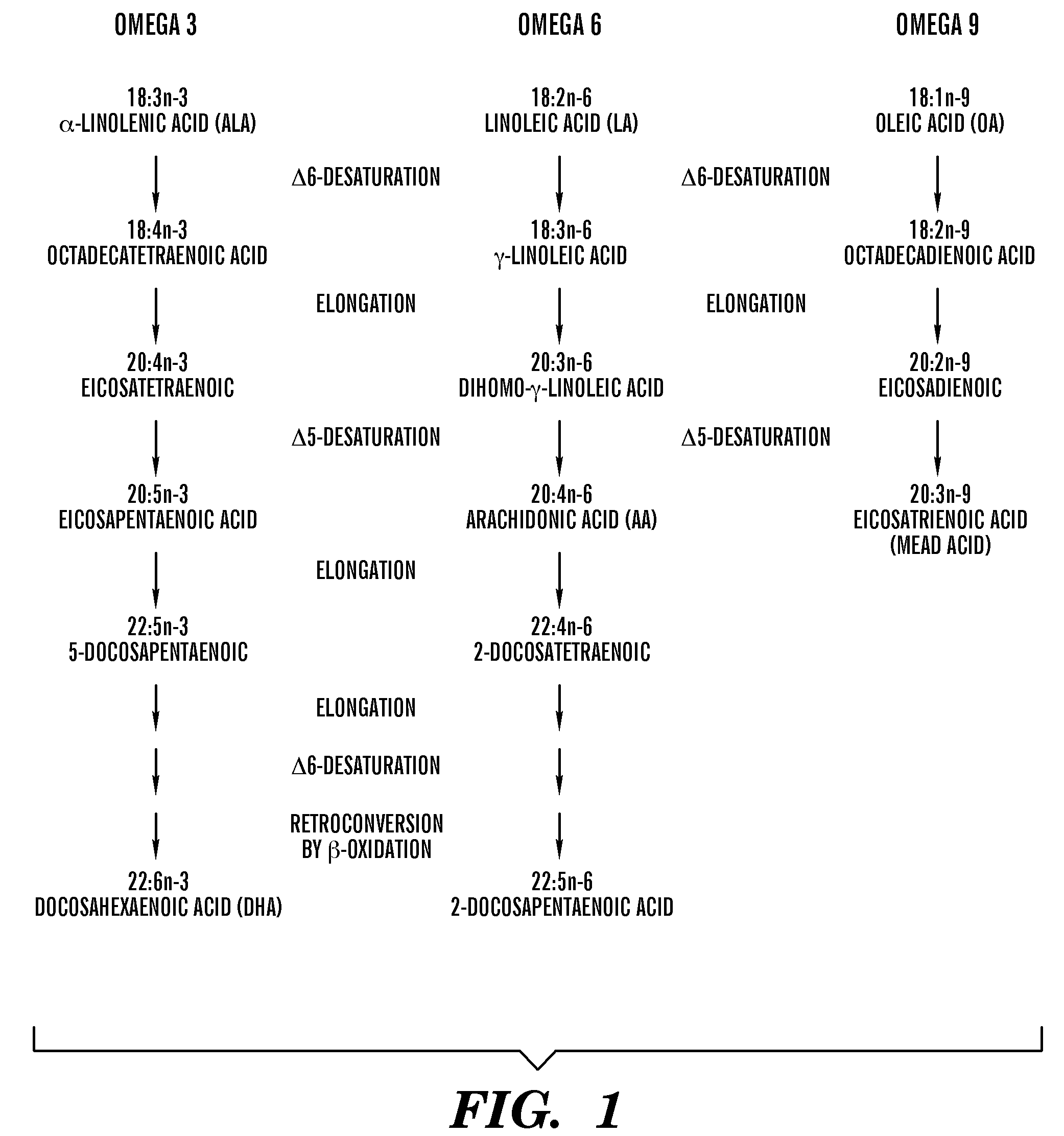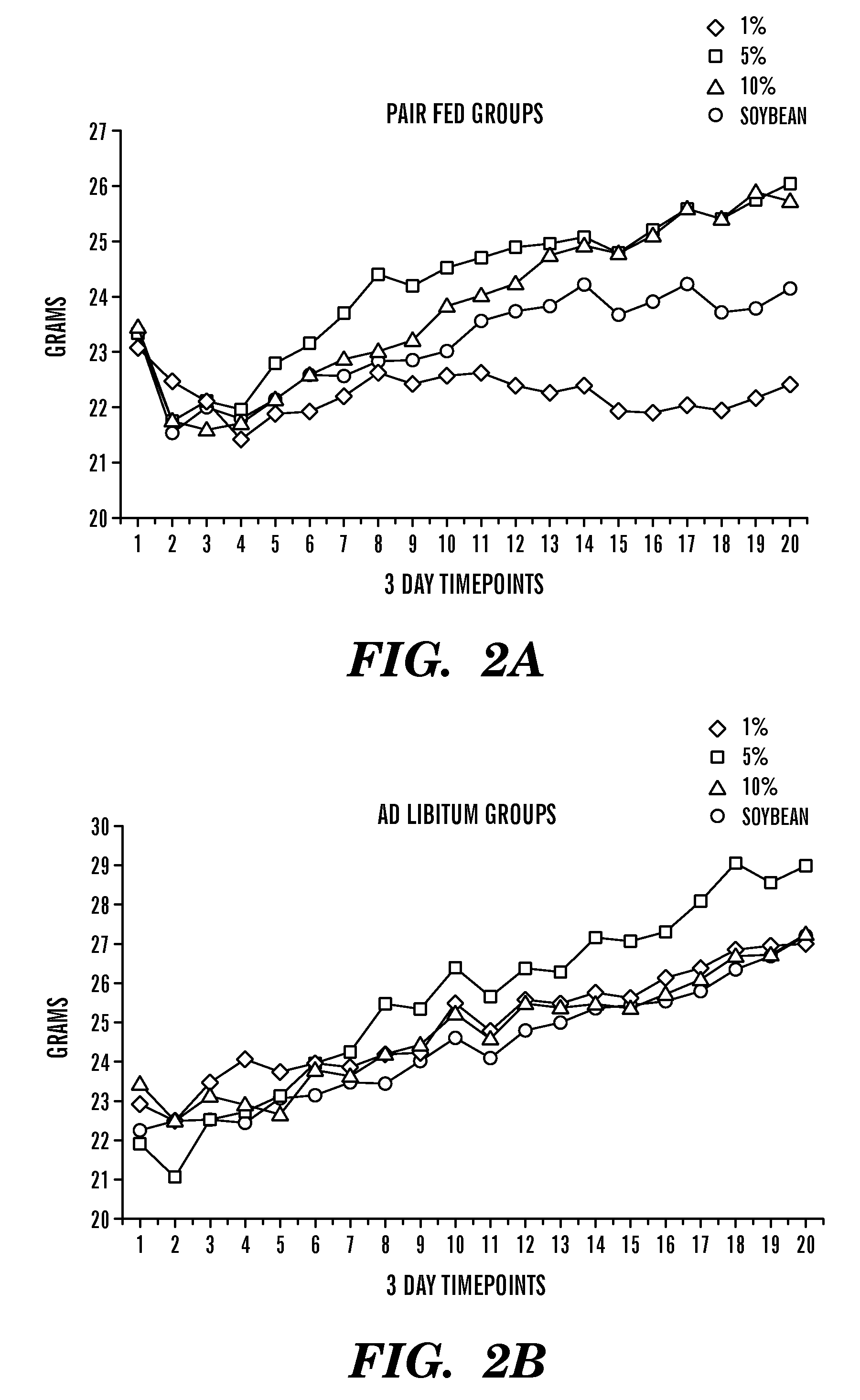Dietary formulations and methods for treatment of inflammation and other disorders
a technology of dietary formulations and disorders, applied in the field of dietary supplements, can solve the problems of long-term use of pn, many complications, and inability to complete the process, and achieve the effects of reducing the overall inflammation, preventing essential fatty acid deficiency, and reducing the level of arachidonic acid
- Summary
- Abstract
- Description
- Claims
- Application Information
AI Technical Summary
Benefits of technology
Problems solved by technology
Method used
Image
Examples
example 1
REFERENCES (EXAMPLE 1)
[0199]1. Das. Essential fatty acids: biochemistry, physiology and pathology. Biotechnology Journal. Mar. 6, 2006 2006; 1:420-439.[0200]2. Innis S M. Essential fatty acids in growth and development. Prog Lipid Res. 1991; 30(1):39-103.[0201]3. Innis S M. Perinatal biochemistry and physiology of long-chain polyunsaturated fatty acids. J Pediatr. October 2003; 143(4 Suppl):S1-8.[0202]4. Bistrian B R. Clinical aspects of essential fatty acid metabolism: Jonathan Rhoads Lecture. JPEN J Parenter Enteral Nutr. May-June 2003; 27(3):168-175.[0203]5. Jeppesen P B, Hoy C E, Mortensen P B. Essential fatty acid deficiency in patients receiving home parenteral nutrition. Am J Clin Nutr. July 1998; 68(1):126-133.[0204]6. Holman R. Essential fatty acid deficiency. Prog Chem Fats Other Lipids. Vol 9; 1971: 275-348.[0205]7. Smit E N, Muskiet F A, Boersma E R. The possible role of essential fatty acids in the pathophysiology of malnutrition: a review. Prostaglandins Leukot Essent ...
example 2
REFERENCES (EXAMPLE 2)
[0243]1. Dorney S F, Ament M E, Berquist W E, Vargas J H, Hassall E. Improved survival in very short small bowel of infancy with use of long-term parenteral nutrition. J Pediatr. October 1985; 107(4):521-525.[0244]2. Freund H R. Abnormalities of liver function and hepatic damage associated with total parenteral nutrition. Nutrition. January-February 1991; 7(1):1-5; discussion 5-6.[0245]3. Gura K M, Lee S, Valim C, et al. Safety and efficacy of a fish-oil-based fat emulsion in the treatment of parenteral nutrition-associated liver disease. Pediatrics. March 2008; 121(3):e678-686.[0246]4. Alwayn I P, Gura K, Nose V, et al. Omega-3 fatty acid supplementation prevents hepatic steatosis in a murine model of nonalcoholic fatty liver disease. Pediatr Res. March 2005; 57(3):445-452.[0247]5. Javid P J, Collier S, Richardson D, et al. The role of enteral nutrition in the reversal of parenteral nutrition-associated liver dysfunction in infants. J Pediatr Surg. June 2005; ...
example 3
Increased AA Produces Liver Injury and Mortality
[0267]Experiments in mice were performed in order to investigate the results of consumption of increased arachidonic acid with respect to DHA:AA ratios. Mice were fed as indicated below in Table 7, for 19 days, and monitored for % body weight gain, mortality (ALT), liver injury (as indicated by increased alkaline phosphatase levels), and growth rate. Histology was also used to confirm liver injury in the mice. Results are presented in Table 7 below:
[0268]
TABLE 7Effect of increased DHA:AA ratios in the diet% BodyALTAPGroup (n = 5)MortalityWt gained(Mean ± SD)(Mean ± SD)NotesControl Chow 0%7.228.4 ± 8.0 113.6 ± 9.5 Normal growth2.1% AA +60%1.648.0 ± 20.9 142 ± 26.91 mouse died day# 4,0% DHA2 mice died day#62% AA +40%12.1 103 ± 111.7157.0 ± 18.42 mice died day#60.1% DHA
[0269]Animals treated with increased ratios of AA had increased mortality and liver injury (ALT and alkaline phosphatase). Growth rates were also lower in elevated AA ani...
PUM
| Property | Measurement | Unit |
|---|---|---|
| time course | aaaaa | aaaaa |
| time | aaaaa | aaaaa |
| time | aaaaa | aaaaa |
Abstract
Description
Claims
Application Information
 Login to View More
Login to View More - R&D
- Intellectual Property
- Life Sciences
- Materials
- Tech Scout
- Unparalleled Data Quality
- Higher Quality Content
- 60% Fewer Hallucinations
Browse by: Latest US Patents, China's latest patents, Technical Efficacy Thesaurus, Application Domain, Technology Topic, Popular Technical Reports.
© 2025 PatSnap. All rights reserved.Legal|Privacy policy|Modern Slavery Act Transparency Statement|Sitemap|About US| Contact US: help@patsnap.com



